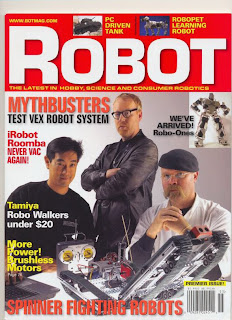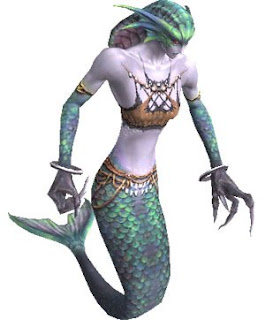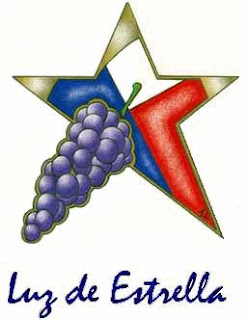TTABlog Quarterly Index: April 2008 - June 2008
E-mail subscriptions to the TTABlog are available. Just enter your e-mail address in the box on the right to receive a daily update via Feedblitz. Note also the new Babelfish translation box that appears in the column on the right (scroll down). You may now translate the postings into any of eight languages.

Section 2(a) - False Connection:
- Finding PTO Evidence Inadequate, TTAB Reverses 2(a) and 2(d) Refusals of "HEINEKEN" for Meat Juices
- Precedential No. 23: Finding a (2)(a) False Connection, TTAB Cancels "TWIGGY" Registration for Clothing
Section 2(d) - Likelihood of Confusion:
- Affirming 2(d) Refusal of "SMOKEYS HOUSE OF BARBEQUE," TTAB Finds Clothing and Sauce Related to Restaurant Services
- TTAB Affirms 2(d) Refusal Despite Sophistication of Customers for Computer Software and Services
- TTAB FInds "LUZ DE ESTRELLA" and "STARLITE WINERY" Confusingly Similar for Wine
- "SLURP-EZE" for Pet Bowls Confusingly Similar to "SLURPEE" for Frozen Drinks, Says TTAB
- Tip from the TTABlog: Hands Off the Playboy Bunny!
- TTAB Reverses 2(d) Refusal: "GRIP-RITE" for Industrial Gloves Not Confusing With "GRIPRITE" for Shoes and Boots
- Mueller's Bests Barilla in TTAB 2(d) Food-Fight Over "AMERICA'S FAVORITE PASTA"
- TTAB Says "No Way" to "JOSE," Finds it Confusingly Similar to "JOSE CORTEZ" for Tequila
- Finding PTO Evidence Inadequate, TTAB Reverses 2(a) and 2(d) Refusals of "HEINEKEN" for Meat Juices
- PTO Proves Wine and Restaurant Services Related, TTAB Affirms 2(d) Refusal of "BRICKSTONE CELLARS"
- Precedential No. 21: TTAB Finds "LA PEREGRINA" and "THE PILGRIM" Confusingly Similar for Jewelry Per Doctrine of Foreign Equivalents
- "CINQUANTE-CINQ" and "55" Confusingly Similar for Wine, Says TTAB, Equivalently
- Finding No Cultural Significance for "HONEYSUCKLE ROSE," TTAB Affirms 2(d) Refusal over "HONEYSUCKLE" For Clothing
- Precedential No. 18: TTAB Dismisses "SPORTSMAN'S WAREHOUSE" Cancellation Petition, Finding No Likelihood of Confusion and No Fraud
- Precedential No. 17: Finding the Marks Entirely Different, TTAB Grants Judgment on the Pleadings in 2(d) Opposition
Section 2(e)(1) - Mere Descriptiveness:
- Precedential No. 32: Double Entendre Argument Remedies "THE FARMACY" 2(e)(1) Refusal, Says TTAB
- "WWW.BOTMAG.COM ROBOT" Merely Descriptive of Robot Magazines, Says TTAB
- Precedential No. 29: TTAB Affirms 2(e)(1) Refusal of Japanese Term Meaning "Walking" for Footwear
- TTAB Reverses Mere Descriptiveness Refusal of "PETIT-PETITE" for Wine
- "REPTILE SAUSAGE" Merely Descriptive of Food for Reptiles, Says TTAB
Section 2(e)(4) - Primarily Merely a Surname:
- Despite Claim that "MERROW" Means "Mermaid," TTAB Affirms 2(e)(4) Surname Refusal
- TTAB Affirms Surname Refusal of "HARRINGTON OAK" for Flooring
Section 2(e)(5) - Functionality:
Abandonment:
- TTAB Cancels "JONATHAN LOGAN" Clothing Registrations: Trade Name Use is not Trademark Use
- Precedential No. 22: Finding Old "LASALLE" Automobile Mark Abandoned, TTAB Dismisses General Motors' Opposition for Lack of Priority
Bona Fide Intent:
Failure to Function:
- Precedential No. 31: TTAB Reviews Specimen Brochure, Affirms Failure-to-Function Refusal
- Precedential No. 26: Specimens of Use Display Web Address, Not Service Mark Use
- Precedential No. 20: TTAB Finds Stitching Design on Jean Pockets Merely Ornamental
Fraud:
- Precedential No. 27: Correction of Error in Goods Prior to Publication Creates Rebuttable Presumption of No Fraud, Says TTAB
- Precedential No. 23: Finding a (2)(a) False Connection, TTAB Cancels "TWIGGY" Registration for Clothing
- Precedential No. 18: TTAB Dismisses "SPORTSMAN'S WAREHOUSE" Cancellation Petition, Finding No Likelihood of Confusion and No Fraud

Genericness:
- On Summary Judgment, TTAB Finds "BRIDGELOAN.COM" to be Generic for Commercial Lending Services
- TTAB Affirms Genericness Refusal of "BEADCHIP" for .... Guess What?
- Precedential No. 24: TTAB Affirms Genericness Refusal of "BOND-OST" for Cheese
- TTAB Reverses Genericness Refusal of "DIGITAL OILFIELD" for B-to-B E-Commerce Services
Ownership:
Phantom Mark:
Procedural Issues:
- TTABlog Practice Pointer: Failure to Answer Admission Requests May Be Harmful to Your Application's Health
- Precedential No. 17: Finding the Marks Entirely Different, TTAB Grants Judgment on the Pleadings in 2(d) Opposition
Res Judicata/Collateral Estoppel:
- CAFC Bars Cancellation Petition as Collateral Attack on Prior Federal Court Judgment
- Precedential No. 19: TTAB Grants Summary Judgment Against Applicant Enjoined From Use and Registration of His Mark
Single Artistic Work:
Specimens of Use/Drawing:
- Precedential No. 33: TTAB Affirms Refusal of "FREEDOM STONE" for Cornerstones as Title of a Single Work
- Precedential No. 28: TTAB Finds Drawings OK, But Packing Label Specimen Fails to Show Service Mark Use
- TTAB Overturns PTO Refusal, Finds "LAY'S GET YOUR SMILE ON" to be Unitary Mark
Use in Commerce:
- Precedential No. 30: TTAB Grants Summary Judgment in Opposition Because Applicant Was Contractually Prohibited From Using Subject Mark
- Precedential No. 19: TTAB Grants Summary Judgment Against Applicant Enjoined From Use and Registration of His Mark
CAFC Decisions:
Leo Stoller:
- Supreme Court Says Stoller Abused Its Process
- Seventh Circuit Vacates Google's Judgment Against Stoller Companies

Other:
- Thilo C. Agthe Comments on Proposed New Rule 2.85(f)
- PTO Proposes Potpourri of Trademark Rule Changes
- TTAB Posts June 2008 Hearing Schedule
- Could Annual "MEET THE BLOGGERS" Event Lead to World Peace?
- Marty Schwimmer's Trademark Blog Turns Six
- Ten TTABlog Questions About Fraud
- Wednesday in Berlin
- Unfriendly Shores? Recent Developments in U.S. Law May Trouble Foreign Trademark Owners
- TTABlogger Arrives at INTA Berlin
- "MEET THE BLOGGERS IV" Set for May 19th in Berlin
- DC Circuit Rules TTAB Party May Raise New Issues in 21(b) Civil Action for Review
- TTAB Posts May 2008 Hearing Schedule
- Have TTAB Judges Been Appointed Unconstitutionally?
- TTABlogger Receives Refusable Offer From "Patent Trademark Register"
- Guest Comment: Pamela Chestek on the TTAB's Bose v. Hexawave Ruling re "Use in Commerce"
- PTO Proposes Rule Changes Regarding Express Mail and Certificate of Mailing Filings
- TTAB Posts April 2008 Hearing Schedule
Text and last two photographs copyright John L. Welch 2008.
































